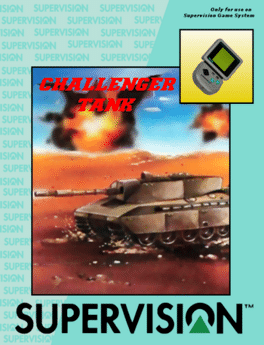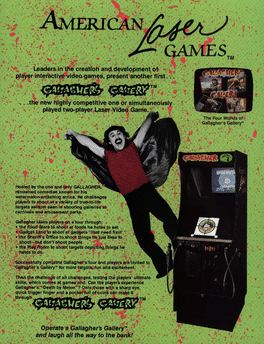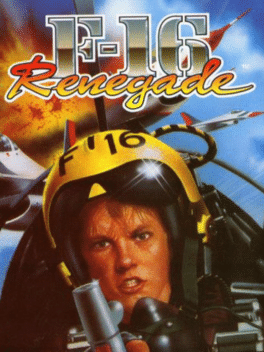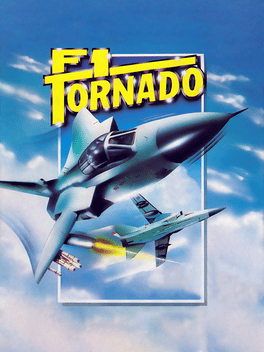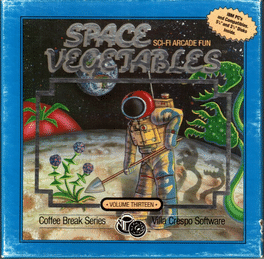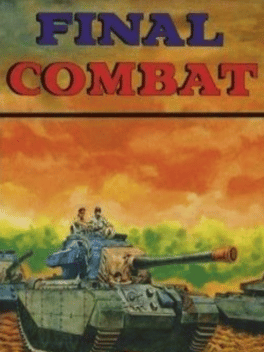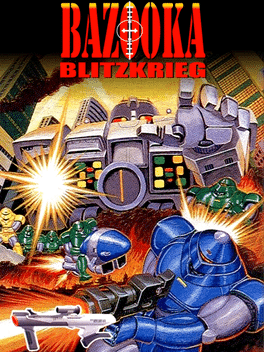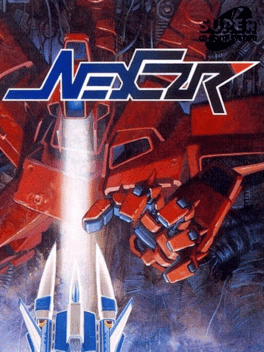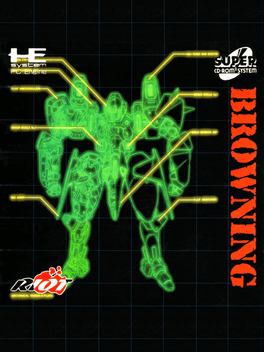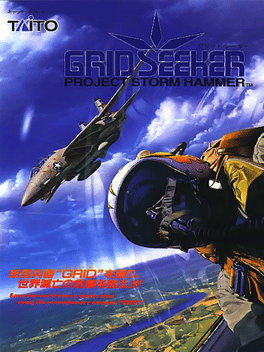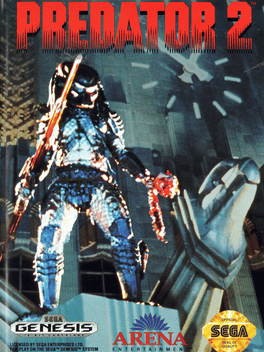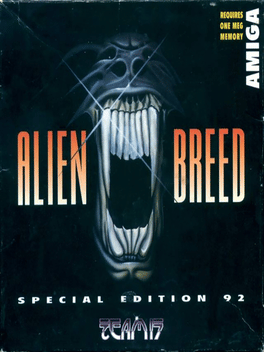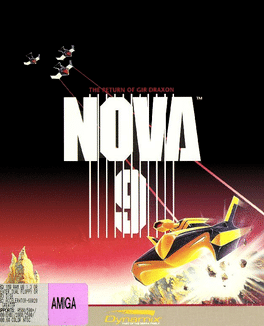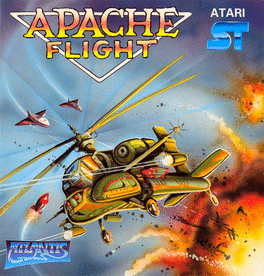New Shooter Games - Page 411
-
Challenger Tank
1992
-
Gallagher's Gallery
1992
Gallagher's Gallery
1992
A LaserDisc-based light-gun game from American Laser Games featuring everyone's favorite watermelon-smashing "comic," Gallagher. -
F-16 Renegade
1992
F-16 Renegade
1992
F-16 Renegade: The action in this game consists of flying a jet and shooting other jets. However, the perspective alternates from overhead scrolling (odd levels) to 3rd person view from behind the jet (even levels). Powerups come in the form of stronger weapons, smart bombs, and extra lives. The game also features a 2-player competitive mode. -
F1 Tornado
1992
-
Space Vegetables
1992
-
Final Combat
1992
Final Combat
1992
Johnson and Berry are good fellows in the battlefield. They have experienced numerous small and large battles without fail. But this time they've been given the most difficult mission ever: their commander asked for reinforcement support for the war emergency, but the enemy's frontier military post is located along the shortcut of the reinforced army's movement. Time is urgent! The commander decided to send a guerilla soldier to destroy the enemy's frontier military post in order for the reinforcements to pass through. Johnson and Berry are the storm-troopers who are the only team with a chance for success and survival! -
Bazooka Blitzkrieg
1992
Bazooka Blitzkrieg
1992
Bazooka Blitzkrieg game made for the SNES Super Scope. It featured a bleak modern setting filled with cyborgs and various bosses including a large flying warship a tank, and various others. The primary button fired regular machine gun rounds, and the thumb button fired rockets. Released in 1992 by Bandai. -
Nexzr
1992
Nexzr
1992
Nexzr is a vertically scrolling shoot-em-up similar to Super Star Soldier. The player-controlled spaceship starts with a simple vulcan gun that can only shoot straight. Various power-ups can either enhance the strength of this gun, replace it with a laser weapon, or add a secondary weapon (homing fire, thin spreading laser attacks, etc.), which is activated automatically. Mid- and end-level bosses are encountered on nearly every stage. Additional lives can be collected, but the player always restarts from the beginning of the stage when his fighter craft is destroyed. -
Browning
1992
Browning
1992
Browning is a side-scrolling action game developed by Telenet Japan and published by Riot. A mysterious army is threatening to take over the world and, from their secret hideout, they are building a supreme weapon capable of wiping out the entire planet. Breed Schuyler and his heavy mechanical armor, codenamed "X-BR Browning" (The "BROWN INnovation Gunner"), are deployed to counter the impending threat. The operation "Running Saber" is a go - the machine and its pilot must both infiltrate the Sea-Square island, a man-made fortress that sits somewhere in the Atlantic Ocean, and destroy the enemy's secret weapon. The game consists of five long stages which have to be completed within a time limit, from the island surface to the enemy's underground military and research facility. The Browning comes equipped with a Vulcan gun and the mecha-suit can hover for a short period of time. A force field also protects the armor against enemy attacks and the device automatically recharges itself whenever the energy balance is lo -
Grid Seeker: Project Storm Hammer
1992
Grid Seeker: Project Storm Hammer(グリッドシーカー)is a vertically scrolling shoot 'em up arcade game developed by Taito. In it, players control one of three different modern fighter crafts and can collect enemy bullets using shielded guns known as Grids. -
GunNail
1992
GunNail
1992
Gunnail is a vertical space shoot'em up. It's a very standard shooter - very fast action, and many enemies to kill. Player controls a space ship, and flies straight forward. He must destroy enemies - the spacecraft has a gun that can be improved by power-ups and special weapons. Player can obtain helpers ("option" from Gradius). At the end of each level a boss awaits - every boss is heavily armed and difficult to destroy. -
Spriggan Mark 2: Re-Terraform Project
1992
Spriggan Mark 2: Re-Terraform Project is an Action game, developed by Compile and published by Naxat Soft, which was released in Japan in 1992. -
Dropzone
1992
-
Predator 2
1992
Predator 2
1992
star 5.9Predator 2 is a 1992 second video game adaptation of the film of the same title, developed by Perfect 10 Productions and Teeny Weeny Games and published by Acclaim Entertainment. It was released for the Sega Genesis, Game Gear, and Master System. The game is played in a third-person isometric view, with great swarms of easily-killed bad guys, who appear through one-way doors scattered throughout the level. Weapons not only include faster machine guns and shotguns, but also a few highly-advanced Predator weapons the player can pick up and use. Each defeated gang member drops drugs that can be picked up and automatically sent off to the "drug squad" for points. No sounds or music from the film get used, but stills scenes from the film do introduce the levels. -
Die Hard 2: Die Harder
1992
Based on the movie of the same name, Die Hard 2: Die Harder pits action hero John McClane against an army of terrorists holding an airport hostage. -
Alien Breed: Special Edition 92
1992
star 6.9An interrim between Alien Breed and its sequel. Gameplay is the same as its predecessor - each level is a maze to be navigated through, while fighting off hordes of aliens. The Special Edition 92 includes 12 new levels and a bunch of new features: "dark missions" in which only the glowing blue eyes of the aliens are visible, and the ability to jump to a level by means of a code. -
Nova 9: The Return of Gir Draxon
1992
It has been two years since the Stellar 7 war. Gir Draxon, the villain, has not been found. Nova 9 has just issued a distress call... Captain John Alex, takes the experimental Raven II tank to investigate the distress call... Nova 9 is the sequel to Dynamix's Stellar 7, a futuristic "tank" shooter, and features similar gameplay. Played from a first person perspective in the cockpit of your tank, the goal is to destroy all of the various enemies found on nine planets. John Alex's tank, the Raven II, is equipped with various weaponry and a long range scanner to help in the mission. It is also equipped with a cloaking device for emergencies. Additional power-ups such as pickup energy and enhancement modules can be either beamed in or "salvaged" from the enemy wreckage. -
Aquaventura
1992
-
Apache Flight
1992
-
Arnie
1992
